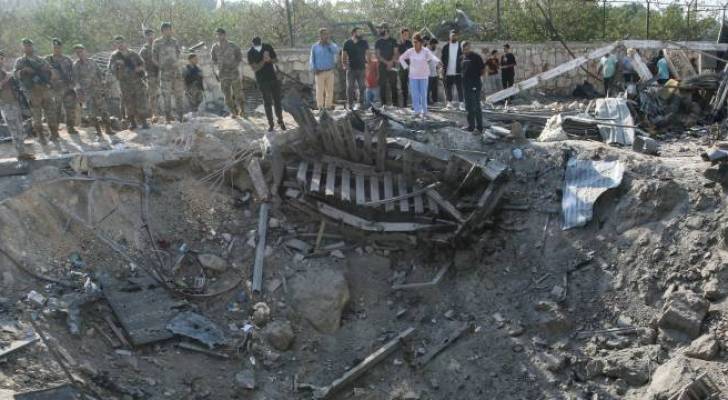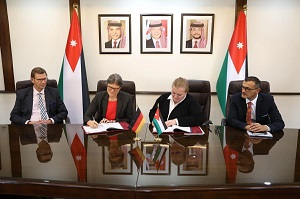Agriculture for security - By Agriculture for security, The Jordan Times
MEXICO CITY/NAIROBI — Even though the world produces enough food to feed all of humanity, the United Nations World Food Program found that more than 295 million people faced acute hunger in 2024 – a record high. While many factors have contributed to rising food insecurity, the most important is conflict. That is especially true in Sub-Saharan Africa (SSA).
For example, the protracted civil war in Sudan has been brutal and is getting worse, pushing parts of the country into famine. This misery, in turn, has led to a deterioration in the security situation and destabilized neighboring countries.
Of course, hunger is far from the only driver of insecurity in Sudan and other SSA countries. But food is essential for stability, meaning that the agriculture sector can be a force for peacebuilding in Africa and worldwide. To that end, our organizations – CIMMYT and AGRA – have worked with African farmers to help stabilize areas beset by conflict and violent extremism.
In Sudan’s eastern Kassala state, a women-led cooperative showed how small interventions can improve community well-being. One of the cooperative’s leaders, Imtithal Atta, was able to increase her yields and earnings dramatically after learning better cultivation techniques and getting access to higher-quality seeds. Her success not only raised her self-confidence and influence, but also helped lower food prices for thousands of displaced people who had sought safety in the region.
In northern Nigeria, long plagued by terrorism, Habiba Abdulkarim and her cooperative faced many obstacles to securing land and reliable inputs. But by coming together to advocate for their needs with local leaders, the group gained access to more farmland and quality seeds. This resulted in better harvests and lower costs, encouraged other women to join forces in cooperative farming, and generated benefits for households and the wider community.
These are not isolated cases. As societies emerge from conflict, the restoration of agriculture is often an important sign of recovery. A steady food supply delivers tangible peace dividends: families can eat, farmers can earn, and local economies can recover. Humanitarian aid can help these communities get back on their feet, but only functioning farms and markets can restore lasting stability.
While this is food security in the traditional sense – reliable access to sufficient and safe nutrition – it also highlights how food can be a strategic commodity. In addition to sustaining households, agriculture anchors fragile states, gives legitimacy to governments, and creates an opening for cooperation in an increasingly fragmented world. Even as developing economies focus on food sovereignty, with self-sufficiency signifying geopolitical resilience, this goal does not have to be at odds with interdependence. A robust national agri-food sector can put countries in a better position to collaborate with international partners on their own terms, improving stability further.
Agriculture can also offer a platform for dialogue among geopolitical competitors. Countries that disagree on trade or borders, for example, may find common ground when it comes to controlling crop diseases or stabilizing grain supplies. Such collaboration can build confidence when negotiations on more contentious issues reach an impasse. This can be achieved through both governmental and non-governmental channels, as the global fight against wheat rust has shown: scientific institutes and governments share resistant varieties across borders, protecting harvests and fostering trust even when diplomatic relations are tense.
Climate change adds to the urgency of boosting food security. Rising temperatures, erratic rains, and soil degradation have already reduced crop yields, while changing weather patterns spread pests and disease. These pressures jeopardize both food sufficiency and safety. Consider fusarium, a fungus that can cause wheat to turn pink and is toxic for humans. As the air becomes warmer and more humid, fusarium grows more easily – as is currently the case in Europe, where crops have little resistance to the fungus.
Climate-resilient agriculture – including drought-tolerant crop varieties, regenerative practices, sustainable irrigation, and integrated pest management – is now essential not just to maintain productivity, but also to prevent civil disorder stemming from soaring prices and tight supplies. Countries that cannot feed their people risk social unrest, while those that cannot work together to overcome shared agricultural problems risk regional conflict. As a result, climate-related shocks to the global food system could cause unprecedented upheaval.
For too long, agriculture has been siloed off from security and diplomatic strategy. But efforts to support and strengthen the resilience of food systems should be central to post-conflict recovery, an arena for dialogue among adversaries, and a frontline strategy in the fight against climate change. The development of local agriculture – ideally with the backing of international investment – may not resolve every conflict, but none can be resolved without it.
Bram Govaerts is director general of CIMMYT. Alice Ruhweza is president of AGRA
Latest News
-
 King to start visit to Japan on Saturday, first stop on Asian working tour
King to start visit to Japan on Saturday, first stop on Asian working tour
-
 ‘Israeli’ army announces new wave of attacks on Lebanon
‘Israeli’ army announces new wave of attacks on Lebanon
-
 NATO chief plays down US troop withdrawal from Romania
NATO chief plays down US troop withdrawal from Romania
-
 King listens to Parliament’s response to Speech from the Throne
King listens to Parliament’s response to Speech from the Throne
-
 Jordan, Germany sign €75M agreement to support economic modernization
Jordan, Germany sign €75M agreement to support economic modernization